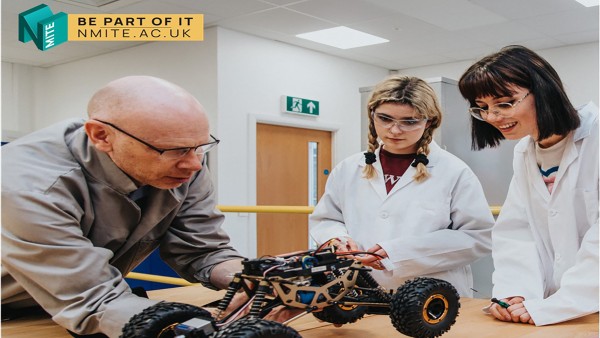Breaking the mould
The benefits of a diverse and inclusive workforce are becoming increasingly apparent and Schaeffler is blazing a trail in this area. As part of its activities, the automotive and industrial supplier is currently sponsoring Habiba Rashid as she undertakes a three-year accelerated Master’s Degree in Integrated Engineering (MEng) at NMITE. Farai Machekanyanga, UK Communications Intern, gets her insight into the world of engineering.
The need for greater diversity within the engineering sector is an issue that Schaeffler is working hard to address. Analysis from EngineeringUK has shown that just 14.5 per cent of those working in engineering are female and while this represents an increase from 12 per cent in 2018, Schaeffler’s research found that only 23.9 per cent of those who accessed its website in 2021 were female.
Leading the way
It's not a secret that science, technology, engineering and mathematics (STEM) careers trend towards the stereotype. It is one of the reasons that Schaeffler has partnered with the New Model Institute for Technology and Engineering (NMITE) and sponsoring Habiba Rashid for the duration of her master’s degree course. Schaeffler hopes this will encourage the positive change and the company is also supporting NMITE’s She/Her=Future Engineer initiative, which is specifically designed to change traditional perceptions and attract female talent.

Career opportunities
From an early age during her upbringing in Italy, Habiba showed an interest in STEM subjects, as well as business studies and technical design. When it came to choosing a career she felt that engineering would not only provide an opportunity to contribute to resolving major world challenges but also enable her to fulfil her management and leadership ambitions.
‘Although always supportive, my parents had some reservations about me becoming an engineer,’ explains Habiba. ‘Back in 2014 there were even fewer young female engineers than there are now and, as someone of South Asian heritage, I was breaking down a lot of barriers culturally. I wanted to attend a specialist engineering school and when I was admitted there were four girls and 26 boys. This made it clear to me that although the barriers to gender equality are slowly changing, there’s much more to be done.’

Course work
With a focus on practical learning, NMITE’s Master’s Degree in Integrated Engineering (MEng) course is designed to mirror a typical workplace, with students attending classes from 9.00am-5.00pm Monday to Friday. Even though she is only two months into her course, Habiba is currently leading a project and heading up a team of five people.
Schaeffler is keen to pass on its skills, knowledge and expertise to Habiba and her fellow students. She states, ‘Schaeffler works directly with us and will also host a visit from students to a Schaeffler site and send subject matter experts from the company to speak to us. Also, the 9.00am-5.00pm structure helps us to prepare for life in the workplace and the training we’re given offers us valuable insight into the challenges faced by engineers and the companies they work for.’
Looking ahead
Representing a massive pool of untapped engineering talent, it is clear that more must be done to attract and develop enterprising and innovative female engineers. The engineering sector as a whole needs to drive change and promote itself to this demographic as a creative, problem solving and inspiring discipline.
Asked what she thinks the future will look like for female engineers, Habiba replies, ‘In order to address a problem, it has to be recognised and supporting people like me will make a massive difference by showing others that it is a challenging and rewarding career, remuneration is competitive, career prospects are appealing, and no two days are the same. Although I am very much in the minority as a female engineer, Schaeffler has opened a massive door for me and more engineering companies should follow its example.’

The road ahead
With drive and ambition in abundance, Habiba is paving the way for others like her. She concludes:
